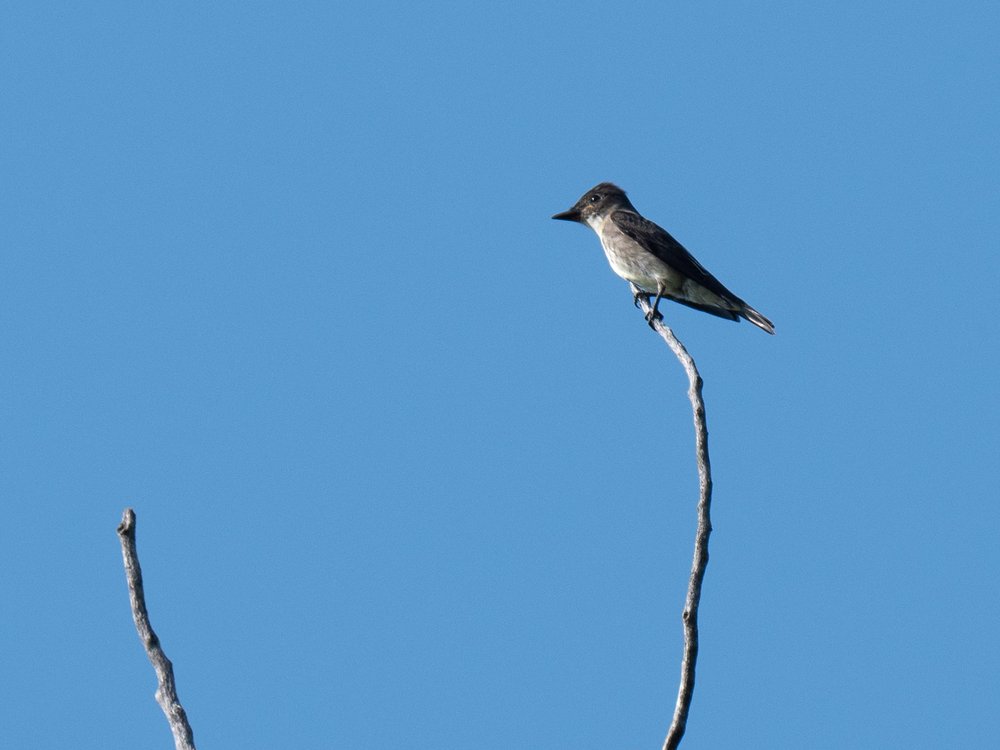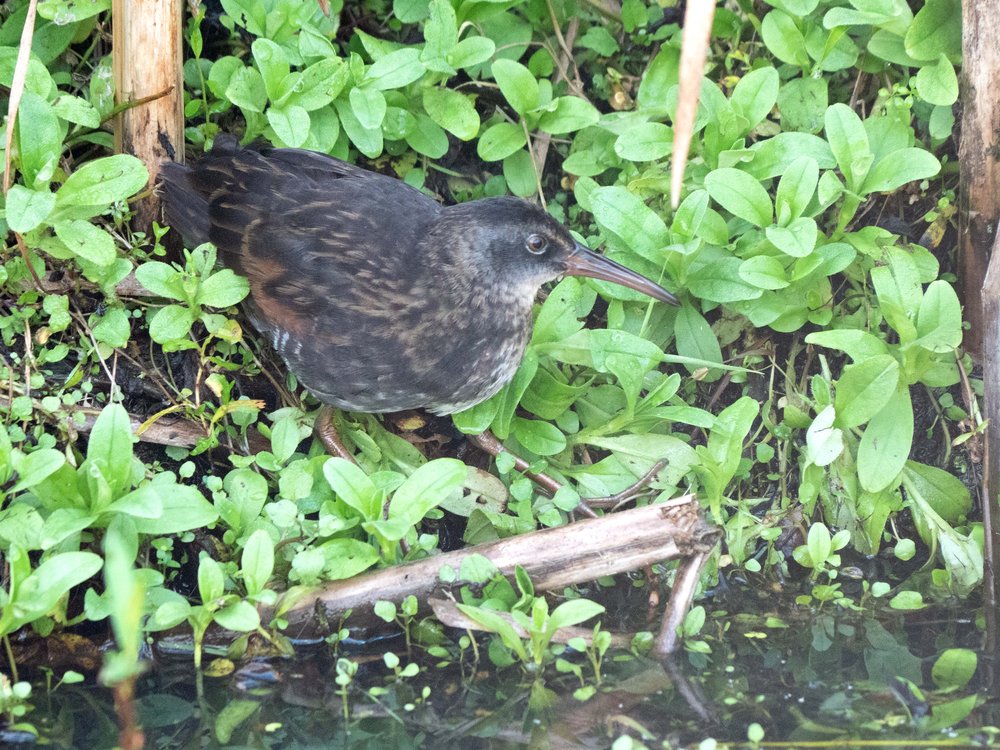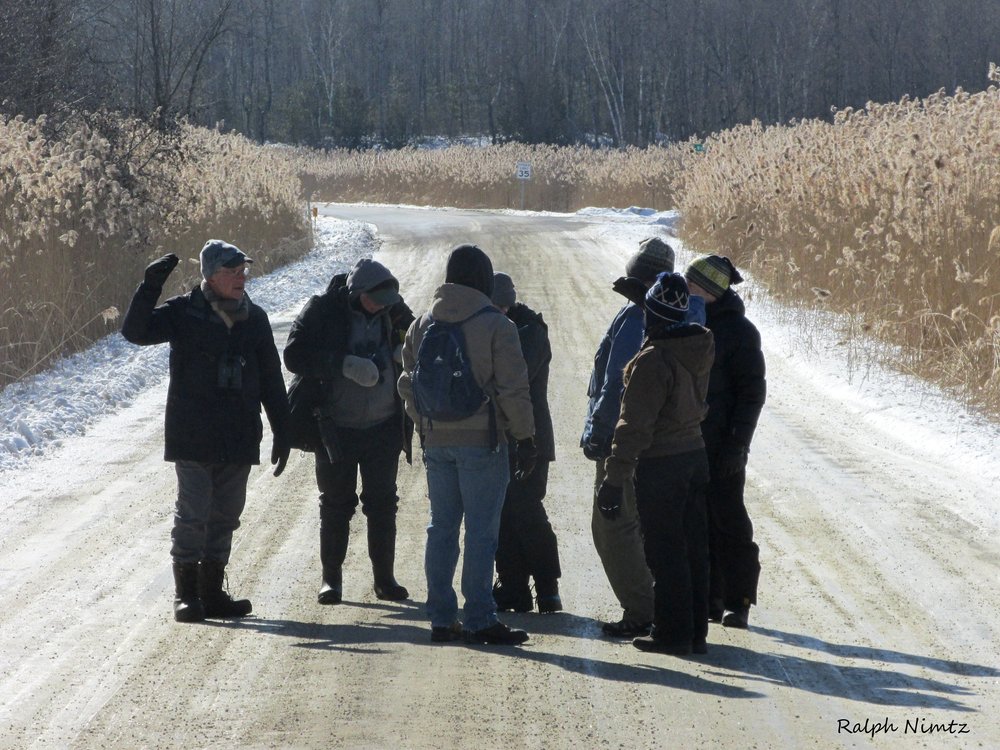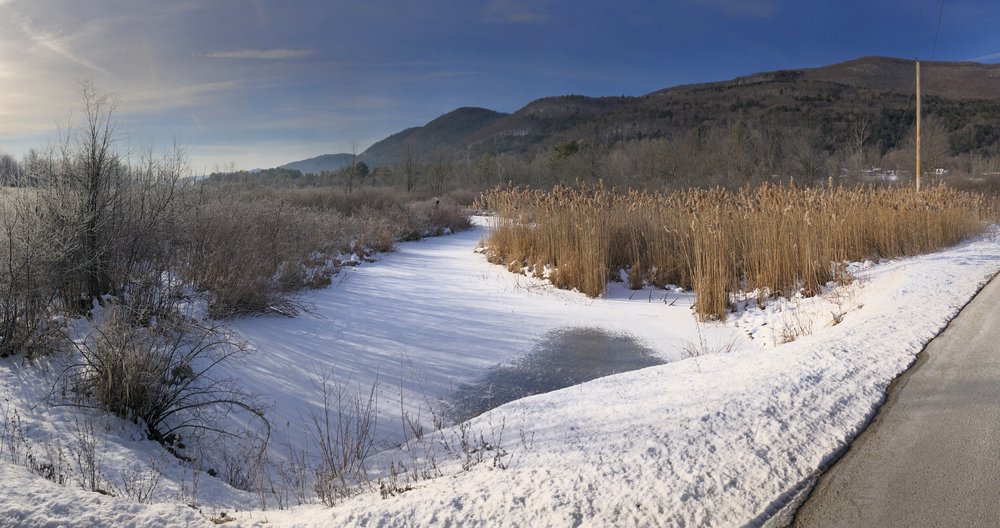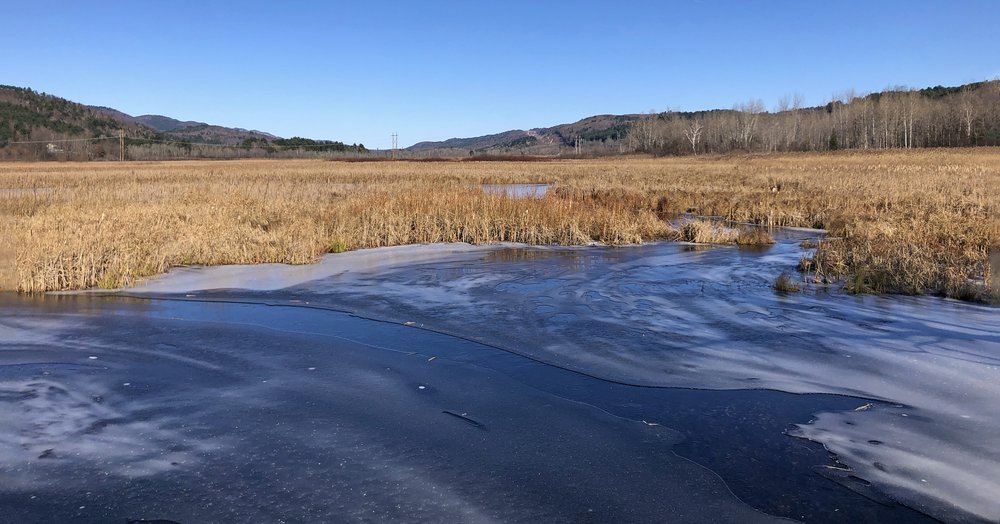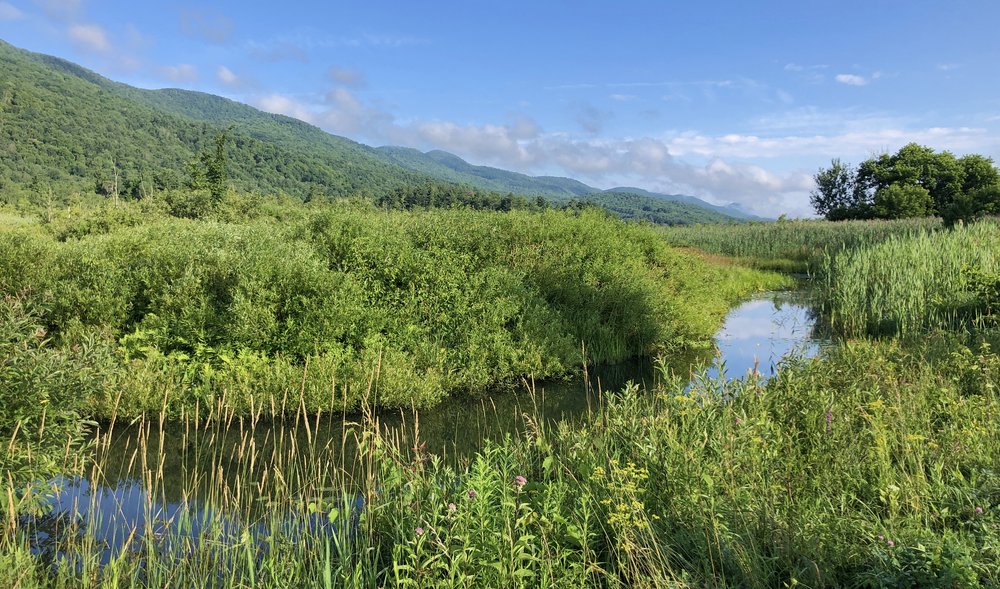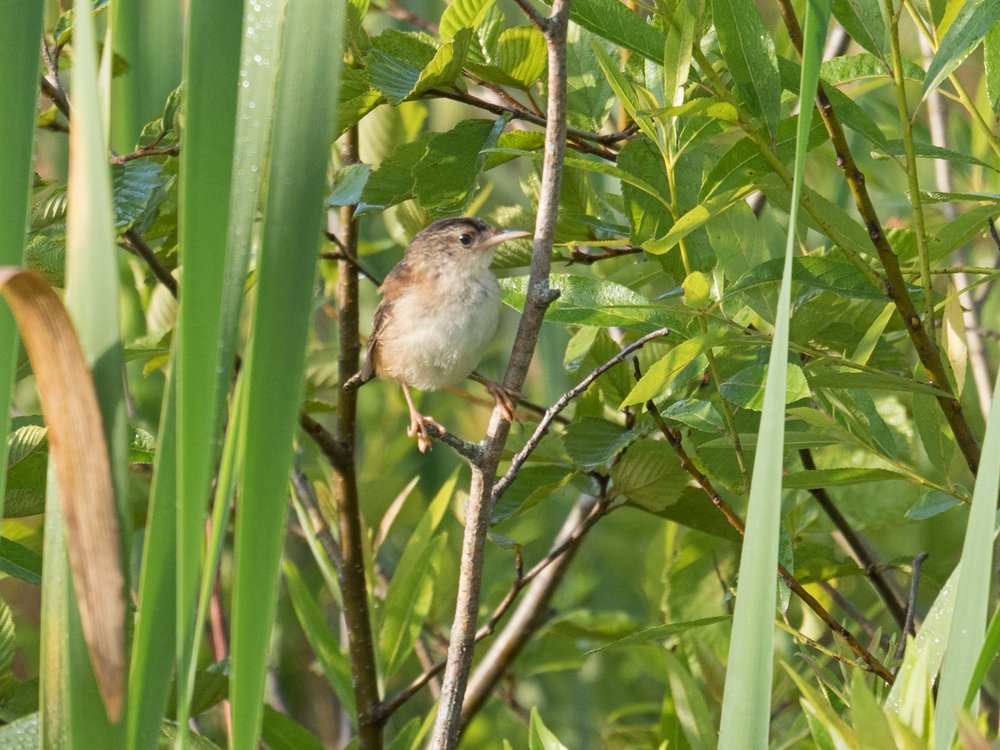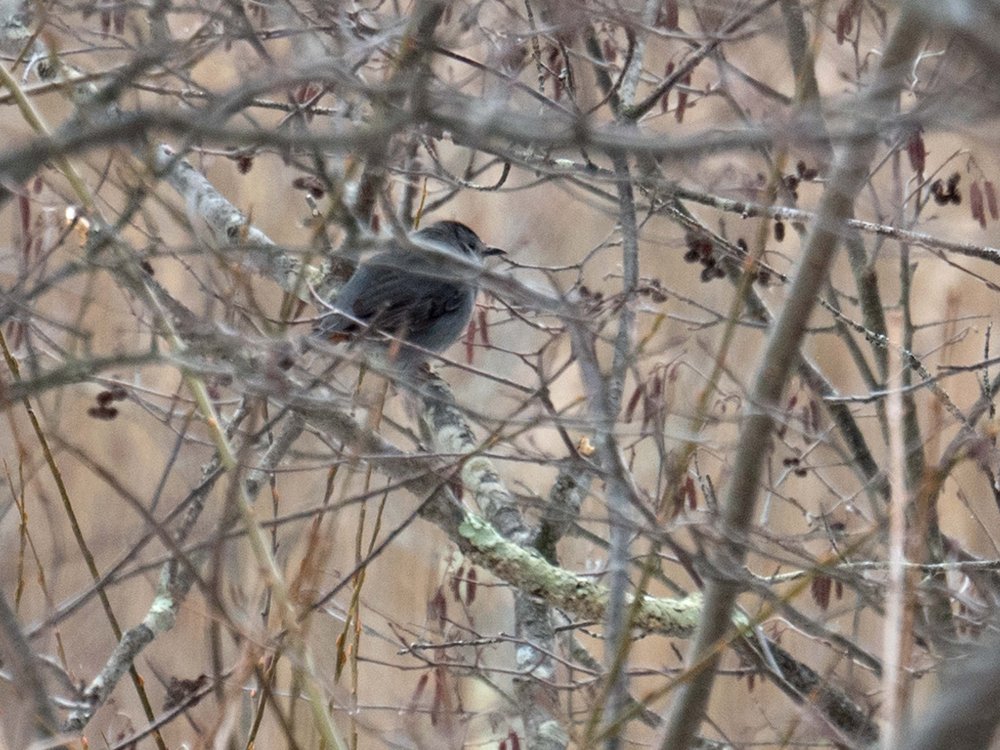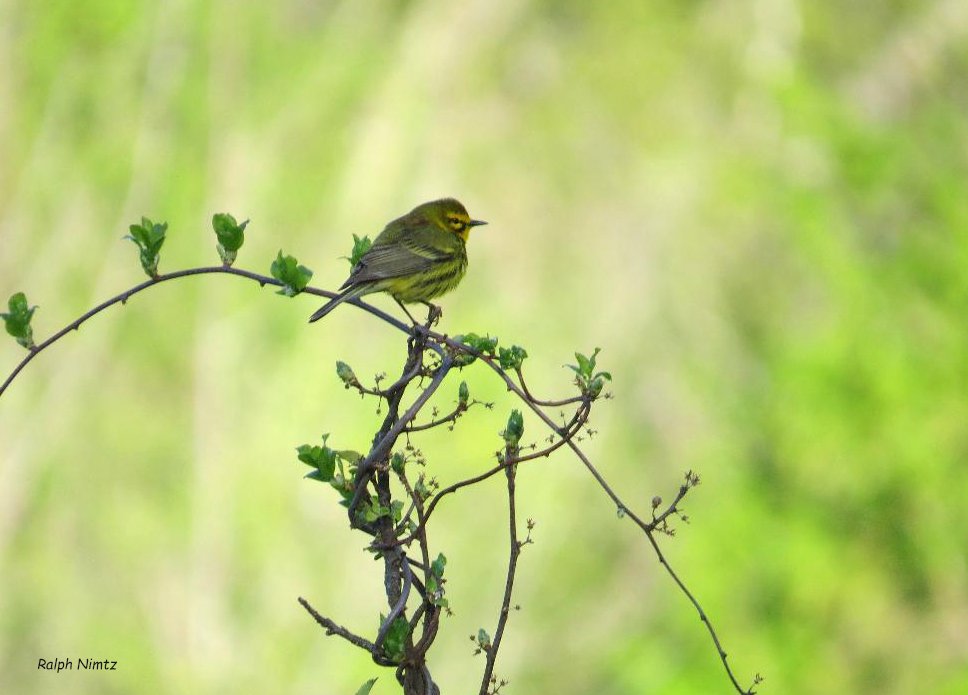 Prairie WarblerBy all accounts, it was the best of all spring days in Vermont. The internet birding world was buzzing with reports of warblers and other migrants on Saturday night.
Prairie WarblerBy all accounts, it was the best of all spring days in Vermont. The internet birding world was buzzing with reports of warblers and other migrants on Saturday night.
Eleven birders gathered at 6 a.m. in West Rutland, the weather chilly and clear, ready for the day’s offerings.
After a brief stop on Sheldon Avenue, near the marsh, we headed to the Pleasant Street power line. As we exited our cars, we could hear the rising song of the prairie warbler followed by the descending song of the field sparrow. Eastern towhees called and sang while the song of the wood thrush floated from the woods. A bay-breasted warbler was spotted in the flowering apple trees. We had good looks at both a blue-winged warbler, the more dominant of the winged warblers at this location, and a prairie warbler as it belted out its song.
Then on to West Rutland Marsh. One of the late-to-arrive this season flycatchers, an alder, was heard along Marble Street. A northern parula was also heard along this stretch. At the end of the boardwalk a sora called and a Virginia rail as well. We also heard a black-billed cuckoo along Marble Street. On Water Street two tree swallows were busy propagating the species.
Several warbler species were singing along Whipple Hollow Road including blackburnian, northern waterthrush and black-throated blue warblers, but the usual Canada warbler was a no-show. We all had good looks at a Swainson’s thrush.
Our first raptor of the day, an American kestrel was spotted along Route 4.
Of the 23 warbler species seen throughout the day, the Route 4 rest area/Blueberry Hill WMA, produced the greatest number including Cape May, magnolia, Tennessee warblers and another northern parula and three more bay-breasted warblers. A brilliant scarlet tanager was seen as well as a glow-in-the dark Baltimore oriole with its less flamboyant mate nearby.
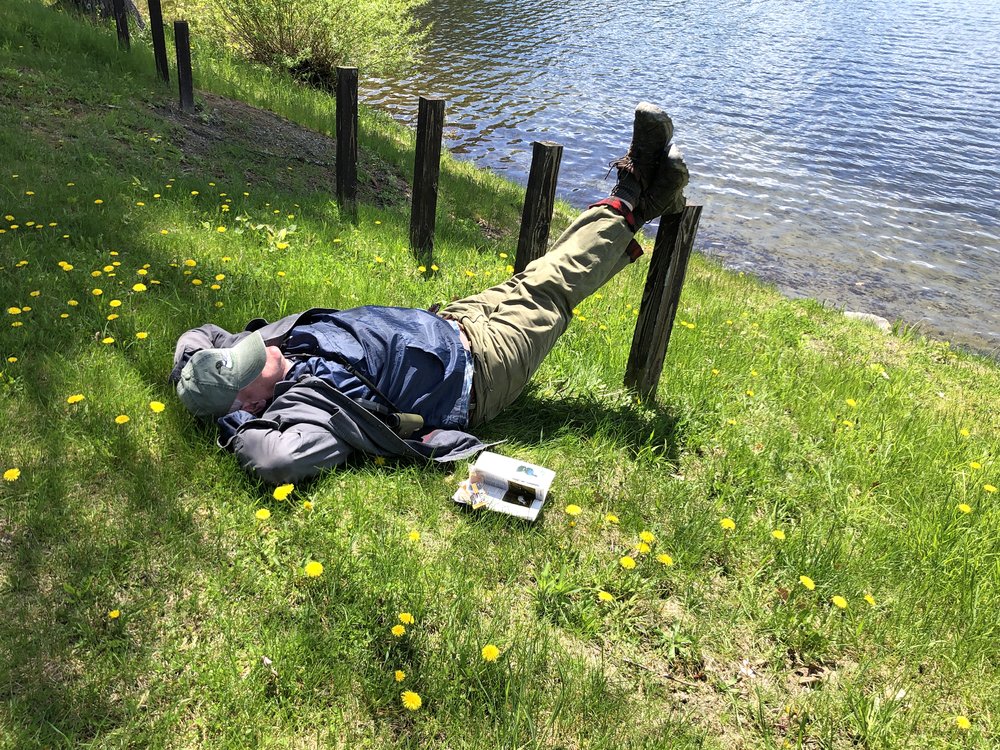 birding is hard workAs the lunch time approached, we headed to Crystal Beach on Lake Bomoseen for a quick picnic. Bonaparte’s gulls had been spotted several times in April and May and two lingered for us to include on our Century Count. We also added solitary sandpiper and double-creasted cormorant at this spot.
birding is hard workAs the lunch time approached, we headed to Crystal Beach on Lake Bomoseen for a quick picnic. Bonaparte’s gulls had been spotted several times in April and May and two lingered for us to include on our Century Count. We also added solitary sandpiper and double-creasted cormorant at this spot.
Stops at Loves Marsh and the north end of Lake Bomoseen yielded wood ducks, a pair of ring-necked ducks, a pine warbler and a yellow-throated vireo.
We then swung around the north end of Lake Bomoseen and down Black Pond and Moscow roads. We had excellent looks at a pine warbler and finally spotted our first hummingbirds of the day.
A loon was seen at Glen Lake along with an osprey with fish ‘in hand’ and two Canada geese with young. An occupied osprey nest was spotted down the road.
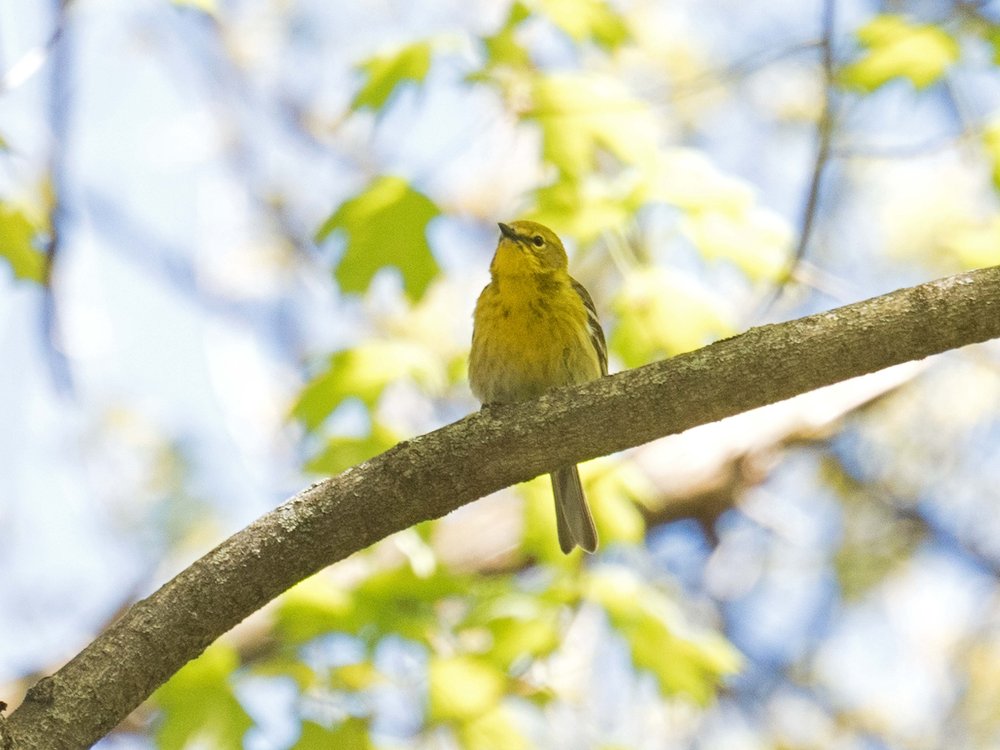 Pine WarblerThe stop at Bomoseen State Park was worthwhile as we picked up a Canada warbler, had good looks at a magnolia warbler and saw one of the few raptors of the day, a broad-winged hawk. We also enjoyed looking at two northern watersnakes near the wetland boardwalk at the park.
Pine WarblerThe stop at Bomoseen State Park was worthwhile as we picked up a Canada warbler, had good looks at a magnolia warbler and saw one of the few raptors of the day, a broad-winged hawk. We also enjoyed looking at two northern watersnakes near the wetland boardwalk at the park.
There was quite a bit of warbler action at the upper lot of the Kehoe Fishing Access aka the Green Dump. We could hear a Louisiana waterthrush singing and a Tennessee warbler while we saw both a black-and-white warbler and northern parula. One of the most stunning sights of the day was the sun shining on a male Cape May warbler. We also saw two somewhat out of place field sparrows at this spot.
The next stop was the Fair Haven airport where we heard and saw several bobolinks.
The day ended in West Haven. We saw a pair of American kestrels on a wire along with an eastern meadowlark. A golden-winged warbler, true to form, although silent, was seen at its usual spot on Ghost Hollow Road. On Cogman Road we picked up some of the day’s misses – indigo bunting, killdeer and bald eagle. And the very last bird of the day was a handsome male orchard oriole, a perfect end to a perfect day of birding in Rutland County. The total for the day was 106 species!
The list:
Canada Goose
Wood Duck
Mallard
Ring-necked Duck
Wild Turkey
Rock Pigeon
Mourning Dove
Belted Kingfisher
Black-billed Cuckoo
Chimney Swift
Ruby-throated Hummingbird
Virginia Rail
Sora
Killdeer
American Woodcock
Spotted Sandpiper
Solitary Sandpiper
Bonaparte's Gull
Ring-billed Gull
Herring Gull
Common Loon
Double-crested Cormorant
American Bittern
Great Blue Heron
Turkey Vulture
Osprey
Bald Eagle
Broad-winged Hawk
Belted Kingfisher
Yellow-bellied Sapsucker
Red-bellied Woodpecker
Downy Woodpcker
Hairy Woodpecker
Northern Flicker
American Kestrel
Peregrine Falcon
Alder Flycatcher
Least Flycatcher
Eastern Phoebe
Eastern Kingbird
Yellow-throated Vireo
Warbler Vireo
Red-eyed Vireo
Blue Jay
American Crow
Common Raven
Northern Rough-winged Swallow
Tree Swallow
Barn Swallow
Cliff Swallow
Black-capped Chickadee
Tufted Titmouse
Red-breasted Nuthatch
White-breasted Nuthatch
House Wren
Marsh Wren
Eastern Bluebird
Veery
Swainson's Thrush
Hermit Thrush
Wood Thrush
American Robin
Gray Catbird
European Starling
Purple Finch
American Goldfinch
Chipping Sparrow
Field Sparrow
White-throated Sparrow
Song Sparrow
Swamp Sparrow
Eastern Towhee
Bobolink
Eastern Meadowlark
Orchard Oriole
Baltimore Oriole
Red-winged Blackbird
Brown-headed Cowbird
Common Grackle
Ovenbird
Louisiana Waterthrush
Northern Waterthrush
Golden-winged Warbler
Blue-winged Warbler
Black-and-white Warbler
Tennessee Warbler
Nashville Warbler
Common Yellowthroat
American Redstart
Cape May Warbler
Northern Parula
Magnolia Warbler
Bay-breasted Warbler
Blackburnian Warbler
Yellow Warbler
Chestnut-sided Warbler
Black-throated Blue Warbler
Pine Warbler
Yellow-rumped Warbler
Prairie Warbler
Black-throated Green Warbler
Canada Warbler
Scarlet Tanager
Northern Cardinal
Rose-breasted Grosbeak
Indigo Bunting
House Sparrow
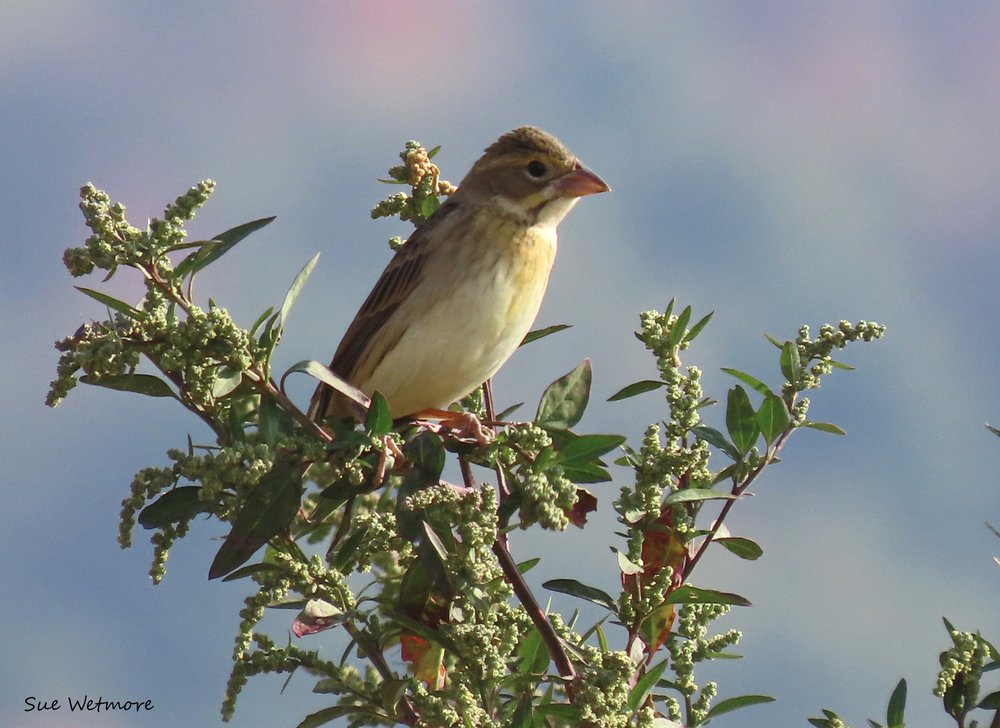 Dickcissel93 species! Rutland County Audubon did very well for its first ever Socially Distanced Fall Birding Weekend! Considering that several species have moved on for the year and our winter visitors have not yet arrived, this is an impressive number. Eleven participants submitted 32 checklists for spots around the county.
Dickcissel93 species! Rutland County Audubon did very well for its first ever Socially Distanced Fall Birding Weekend! Considering that several species have moved on for the year and our winter visitors have not yet arrived, this is an impressive number. Eleven participants submitted 32 checklists for spots around the county. Palm WarblerA Philadelphia vireo was reported at West Rutland Marsh and warbling vireos are still present at Bomoseen State Park. A ruby-throated hummingbird was still present near Lake Bomoseen.
Palm WarblerA Philadelphia vireo was reported at West Rutland Marsh and warbling vireos are still present at Bomoseen State Park. A ruby-throated hummingbird was still present near Lake Bomoseen.
